Christmas Glazed Ham: Is there anything that screams holiday feast quite like it? The glistening, mahogany-hued centerpiece, promising a symphony of sweet and savory flavors with every succulent slice? I think not! For generations, a beautifully glazed ham has graced Christmas tables around the world, becoming a symbol of abundance, celebration, and shared joy.
The tradition of serving ham during the holidays dates back centuries, with roots in pre-Christian winter festivals where pork was a prized and readily available meat. Over time, curing and glazing techniques evolved, transforming simple pork into a culinary masterpiece. Today, the Christmas Glazed Ham remains a beloved tradition, and for good reason. The combination of salty, smoky ham with a sweet and tangy glaze is simply irresistible. The tender, juicy meat practically melts in your mouth, while the caramelized glaze adds a delightful textural contrast.
But beyond the incredible taste, a glazed ham is also surprisingly convenient. It’s a relatively hands-off dish, perfect for feeding a crowd, and the leftovers are fantastic in sandwiches, salads, or even breakfast casseroles. So, if you’re looking to create a truly memorable Christmas dinner, look no further. Let’s dive into my foolproof recipe for a show-stopping Christmas Glazed Ham that will have your guests raving!
Ingredients:
- 1 (12-15 pound) bone-in, fully cooked ham
- 1 cup packed brown sugar
- 1/2 cup Dijon mustard
- 1/4 cup honey
- 1/4 cup apple cider vinegar
- 1 tablespoon Worcestershire sauce
- 1 teaspoon ground cloves
- 1/2 teaspoon ground cinnamon
- 1/4 teaspoon ground nutmeg
- 1/4 cup orange juice
- 1 orange, zested
- 1/4 cup pineapple juice
- Whole cloves (for studding, optional)
Preparing the Ham:
- Preheat your oven to 325°F (160°C). This is crucial for even heating and preventing the ham from drying out. Make sure your oven rack is positioned in the lower third of the oven.
- Prepare the ham for glazing. Remove the ham from its packaging and discard any netting or plastic discs. Place the ham on a large roasting pan fitted with a rack. The rack is important because it allows air to circulate around the ham, ensuring even cooking and preventing the bottom from becoming soggy.
- Score the ham (optional, but recommended). Using a sharp knife, score the ham in a diamond pattern. Make shallow cuts, about 1/4 to 1/2 inch deep, across the surface of the ham. Be careful not to cut too deeply, as you only want to score the fat layer. Scoring allows the glaze to penetrate the ham more effectively and creates a beautiful presentation.
- Stud with cloves (optional). If you’re using whole cloves, insert them into the points of the diamond pattern created by the scoring. This adds a festive touch and infuses the ham with a subtle clove flavor. Don’t overdo it, as too many cloves can be overpowering.
Making the Glaze:
- Combine the glaze ingredients. In a medium saucepan, whisk together the brown sugar, Dijon mustard, honey, apple cider vinegar, Worcestershire sauce, ground cloves, ground cinnamon, ground nutmeg, orange juice, orange zest, and pineapple juice. Make sure everything is well combined and there are no lumps of brown sugar.
- Simmer the glaze. Place the saucepan over medium heat and bring the glaze to a simmer, stirring constantly. Reduce the heat to low and simmer for about 5-7 minutes, or until the glaze has thickened slightly. This allows the flavors to meld together and creates a richer, more flavorful glaze. Be careful not to burn the glaze.
- Remove from heat and let cool slightly. Once the glaze has thickened, remove it from the heat and let it cool for a few minutes. This will make it easier to handle and prevent it from splattering when you brush it onto the ham.
Baking and Glazing the Ham:
- Initial baking. Place the prepared ham in the preheated oven and bake for approximately 10-12 minutes per pound. For a 12-15 pound ham, this will be about 2-3 hours. Use a meat thermometer to monitor the internal temperature of the ham. You want it to reach an internal temperature of 140°F (60°C).
- First glaze application. About 30 minutes before the ham is done, remove it from the oven. Using a pastry brush, generously brush about one-third of the glaze over the entire surface of the ham, making sure to get into all the crevices created by the scoring.
- Return to oven and bake. Return the ham to the oven and continue baking for another 15 minutes.
- Second glaze application. Remove the ham from the oven again and brush with another one-third of the glaze.
- Final bake. Return the ham to the oven and bake for the final 15 minutes. During this time, the glaze will caramelize and create a beautiful, glossy finish. Keep a close eye on the ham to prevent the glaze from burning. If it starts to brown too quickly, you can tent it loosely with aluminum foil.
- Check the internal temperature. The ham is done when the internal temperature reaches 140°F (60°C). Use a meat thermometer to check the temperature in the thickest part of the ham, avoiding the bone.
Resting and Carving:
- Rest the ham. Once the ham is cooked through, remove it from the oven and let it rest for at least 15-20 minutes before carving. This allows the juices to redistribute throughout the ham, resulting in a more tender and flavorful final product. Tent the ham loosely with aluminum foil to keep it warm while it rests.
- Carve the ham. To carve the ham, place it on a cutting board. If it’s a shank-end ham (the part of the ham connected to the leg), start by making a cut along the bone. Then, slice the ham perpendicular to the bone, creating thin, even slices. If it’s a butt-end ham (the top part of the ham), you can simply slice it into thin, even slices.
- Serve and enjoy! Serve the Christmas Glazed Ham warm with your favorite side dishes. It’s delicious with mashed potatoes, green beans, roasted vegetables, and cranberry sauce. Leftovers can be stored in the refrigerator for up to 3-4 days.
Tips and Variations:
- Type of Ham: While this recipe is designed for a bone-in, fully cooked ham, you can adapt it for a boneless ham as well. Just adjust the cooking time accordingly. Boneless hams typically cook faster than bone-in hams.
- Glaze Variations: Feel free to experiment with different glaze ingredients to create your own unique flavor profile. Some popular variations include adding maple syrup, bourbon, or pineapple chunks to the glaze. You can also adjust the spices to your liking. For a spicier glaze, add a pinch of cayenne pepper.
- Adding Fruit: For a festive presentation, you can decorate the ham with pineapple rings, maraschino cherries, or other fruits before baking. Just be sure to secure them with toothpicks.
- Using Leftover Ham: Leftover Christmas Glazed Ham can be used in a variety of dishes, such as sandwiches, soups, salads, and casseroles. It’s also delicious simply reheated and served with eggs for breakfast.
- Preventing Dryness: To prevent the ham from drying out during baking, you can add a cup of water or broth to the bottom of the roasting pan. This will create steam and help to keep the ham moist. You can also baste the ham with its own juices or with additional glaze during baking.
- Adjusting Sweetness: If you prefer a less sweet glaze, you can reduce the amount of brown sugar or honey. You can also add a squeeze of lemon juice or a splash of vinegar to balance the sweetness.
- Using a Meat Thermometer: A meat thermometer is essential for ensuring that the ham is cooked to the correct internal temperature. Insert the thermometer into the thickest part of the ham, avoiding the bone. The ham is done when the internal temperature reaches 140°F (60°C).
- Resting Time is Key: Don’t skip the resting time! Allowing the ham to rest after baking is crucial for ensuring that it is tender and juicy. During resting, the juices redistribute throughout the ham, resulting in a more flavorful and enjoyable eating experience.
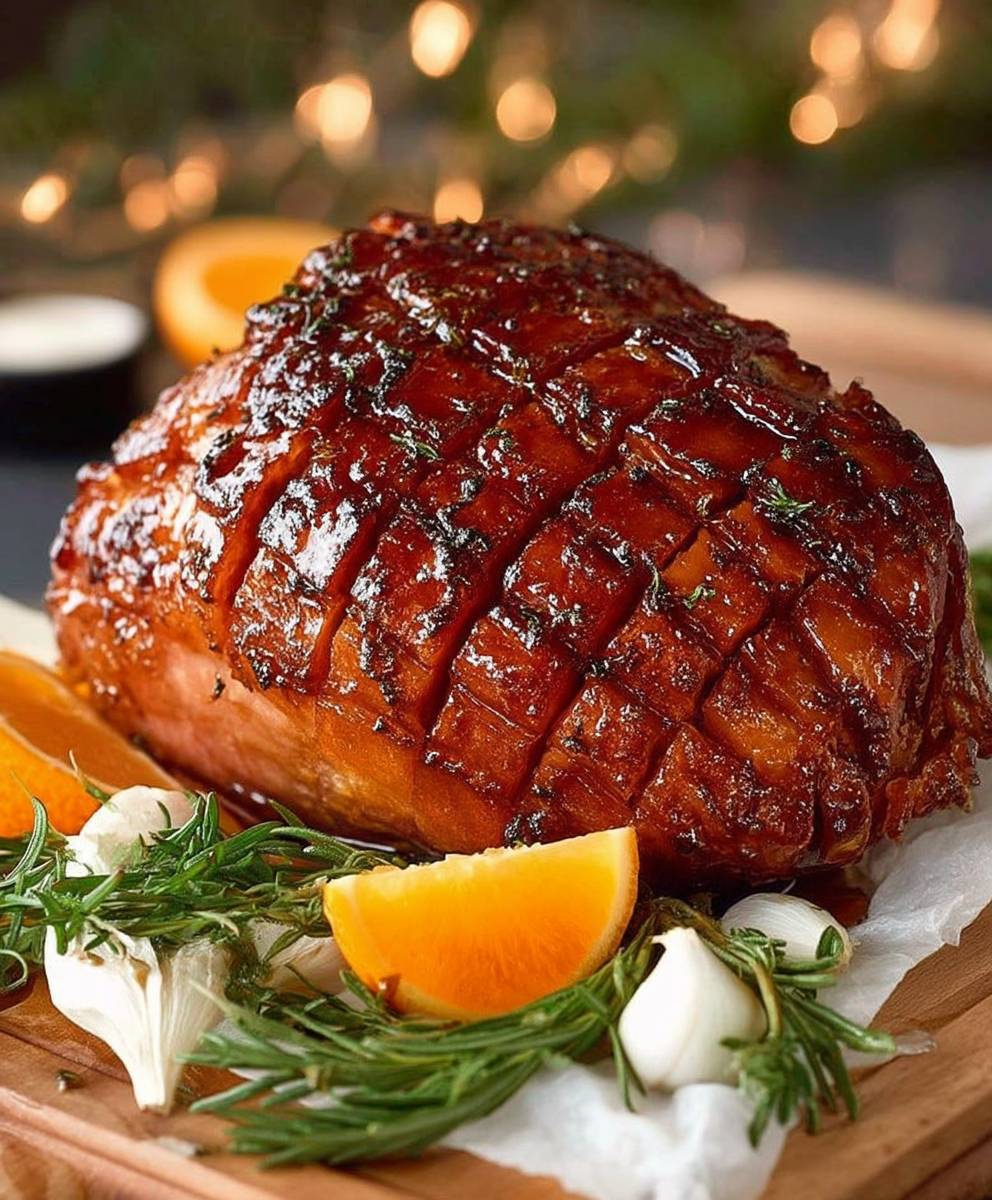
Conclusion:
This Christmas Glazed Ham recipe isn’t just another holiday dish; it’s a guaranteed centerpiece that will have your guests raving. The combination of the savory ham and the sweet, tangy glaze creates a flavor explosion that’s both comforting and sophisticated. Trust me, the aroma alone will fill your home with the spirit of the season!
But why is this particular recipe a must-try? It’s all about the balance. We’ve carefully crafted the glaze to complement, not overpower, the natural flavor of the ham. The result is a perfectly caramelized crust that seals in all the juicy goodness, ensuring every slice is tender and flavorful. Plus, the recipe is surprisingly simple to follow, even for novice cooks. You don’t need to be a culinary expert to achieve ham perfection this Christmas.
Beyond the incredible taste, this Christmas Glazed Ham is incredibly versatile. Serve it as the star of your Christmas dinner, of course, alongside classic sides like mashed potatoes, green bean casserole, and cranberry sauce. But don’t limit yourself! Leftovers are fantastic in sandwiches, omelets, or even diced and added to a hearty winter stew.
Looking for some variations? I’ve got you covered! For a spicier kick, add a pinch of cayenne pepper to the glaze. If you prefer a more fruity flavor, substitute the orange juice with pineapple juice or add a handful of dried cranberries to the glaze during the last 15 minutes of baking. You could even experiment with different types of mustard in the glaze Dijon mustard adds a tangy depth, while whole-grain mustard provides a delightful texture.
And speaking of serving suggestions, consider offering a selection of mustards and chutneys alongside the ham. A sweet and tangy apple chutney or a spicy horseradish sauce would be perfect complements. Don’t forget the rolls! Soft, buttery rolls are essential for soaking up all that delicious glaze.
I truly believe this Christmas Glazed Ham recipe will become a cherished tradition in your family. It’s more than just a meal; it’s an experience. It’s the joy of gathering around the table with loved ones, sharing laughter, and creating memories that will last a lifetime.
So, what are you waiting for? Gather your ingredients, preheat your oven, and get ready to create a Christmas masterpiece! I’m confident you’ll be thrilled with the results.
But most importantly, I want to hear about your experience! Did you try the recipe? Did you make any variations? What did your family and friends think? Share your photos and stories in the comments below. I can’t wait to see your creations and hear how this Christmas Glazed Ham brought joy to your holiday celebration. Happy cooking, and Merry Christmas!
Christmas Glazed Ham: The Ultimate Holiday Recipe
A show-stopping Christmas Glazed Ham with a sweet and tangy glaze, perfect for your holiday feast.
Ingredients
- 1 (12-15 pound) bone-in, fully cooked ham
- 1 cup packed brown sugar
- 1/2 cup Dijon mustard
- 1/4 cup honey
- 1/4 cup apple cider vinegar
- 1 tablespoon Worcestershire sauce
- 1 teaspoon ground cloves
- 1/2 teaspoon ground cinnamon
- 1/4 teaspoon ground nutmeg
- 1/4 cup orange juice
- 1 orange, zested
- 1/4 cup pineapple juice
- Whole cloves (for studding, optional)
Instructions
- Preheat: Preheat your oven to 325°F (160°C). Place oven rack in the lower third of the oven.
- Prepare Ham: Remove ham from packaging and discard any netting. Place ham on a roasting pan fitted with a rack.
- Score (Optional): Using a sharp knife, score the ham in a diamond pattern, about 1/4 to 1/2 inch deep.
- Stud with Cloves (Optional): Insert whole cloves into the points of the diamond pattern.
- Combine Glaze: In a medium saucepan, whisk together brown sugar, Dijon mustard, honey, apple cider vinegar, Worcestershire sauce, ground cloves, ground cinnamon, ground nutmeg, orange juice, orange zest, and pineapple juice.
- Simmer Glaze: Place the saucepan over medium heat and bring the glaze to a simmer, stirring constantly. Reduce the heat to low and simmer for about 5-7 minutes, or until the glaze has thickened slightly. Remove from heat and let cool slightly.
- Initial Baking: Place the prepared ham in the preheated oven and bake for approximately 10-12 minutes per pound. For a 12-15 pound ham, this will be about 2-3 hours. Use a meat thermometer to monitor the internal temperature of the ham. You want it to reach an internal temperature of 140°F (60°C).
- First Glaze: About 30 minutes before the ham is done, remove it from the oven. Brush about one-third of the glaze over the entire surface of the ham.
- Return to Oven: Return the ham to the oven and continue baking for another 15 minutes.
- Second Glaze: Remove the ham from the oven again and brush with another one-third of the glaze.
- Final Bake: Return the ham to the oven and bake for the final 15 minutes. Keep a close eye on the ham to prevent the glaze from burning. If it starts to brown too quickly, you can tent it loosely with aluminum foil.
- Check Temperature: The ham is done when the internal temperature reaches 140°F (60°C).
- Rest: Remove the ham from the oven and let it rest for at least 15-20 minutes before carving. Tent the ham loosely with aluminum foil to keep it warm while it rests.
- Carve: Carve the ham and serve warm.
Notes
- Type of Ham: Can be adapted for boneless ham, adjust cooking time accordingly.
- Glaze Variations: Experiment with maple syrup, bourbon, or pineapple chunks. Add cayenne pepper for a spicier glaze.
- Adding Fruit: Decorate with pineapple rings, maraschino cherries, or other fruits before baking. Secure with toothpicks.
- Leftover Ham: Use in sandwiches, soups, salads, and casseroles.
- Preventing Dryness: Add a cup of water or broth to the bottom of the roasting pan. Baste with juices or glaze during baking.
- Adjusting Sweetness: Reduce brown sugar or honey. Add lemon juice or vinegar to balance sweetness.
- Meat Thermometer: Essential for ensuring correct internal temperature.
- Resting Time is Key: Don’t skip the resting time!


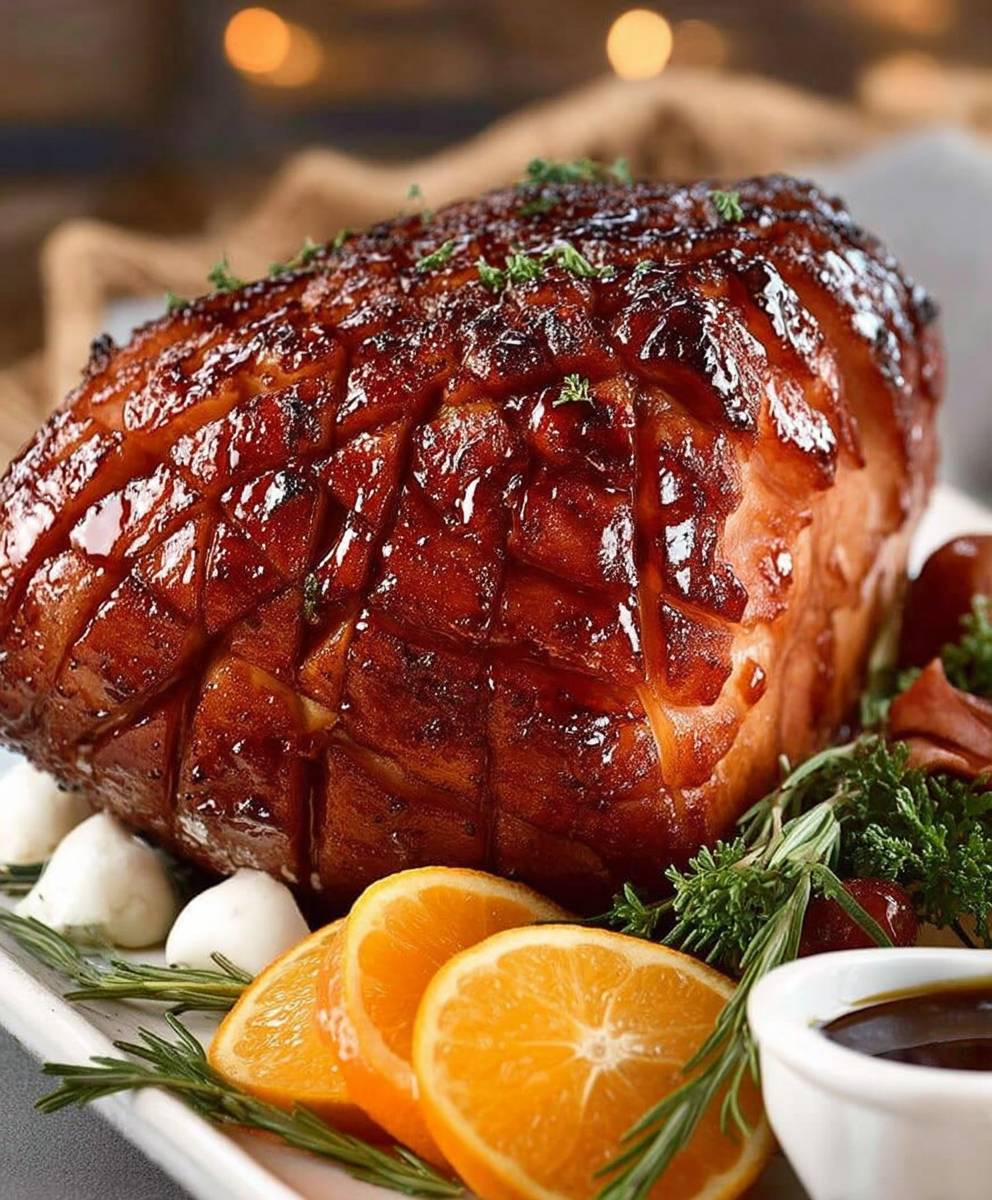
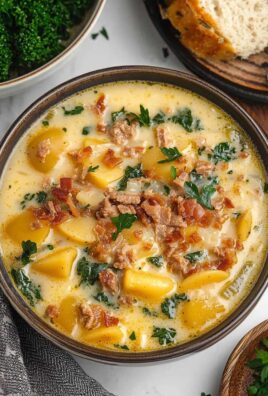
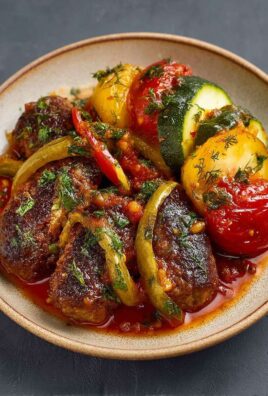
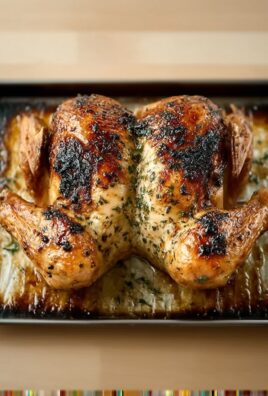
Leave a Comment